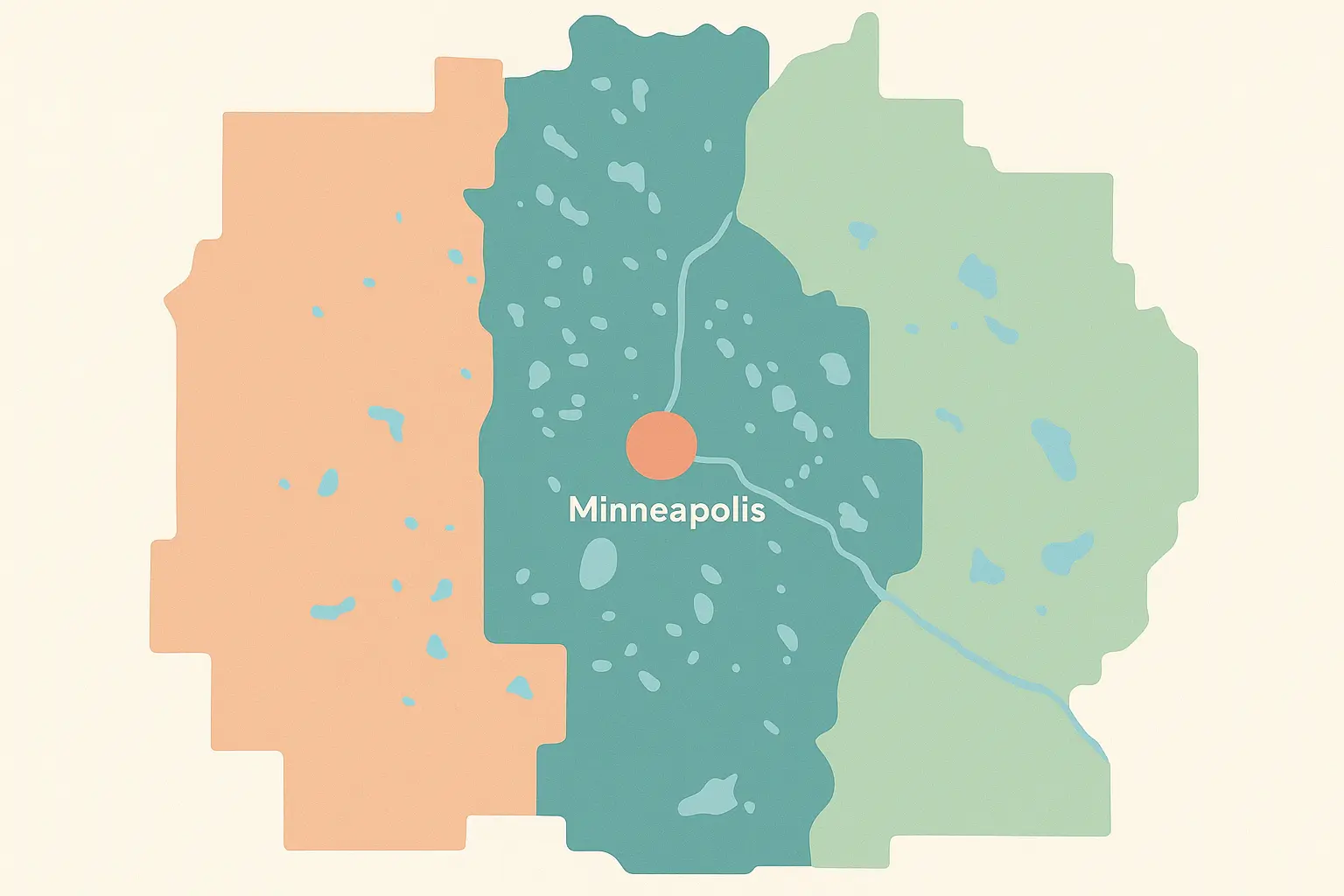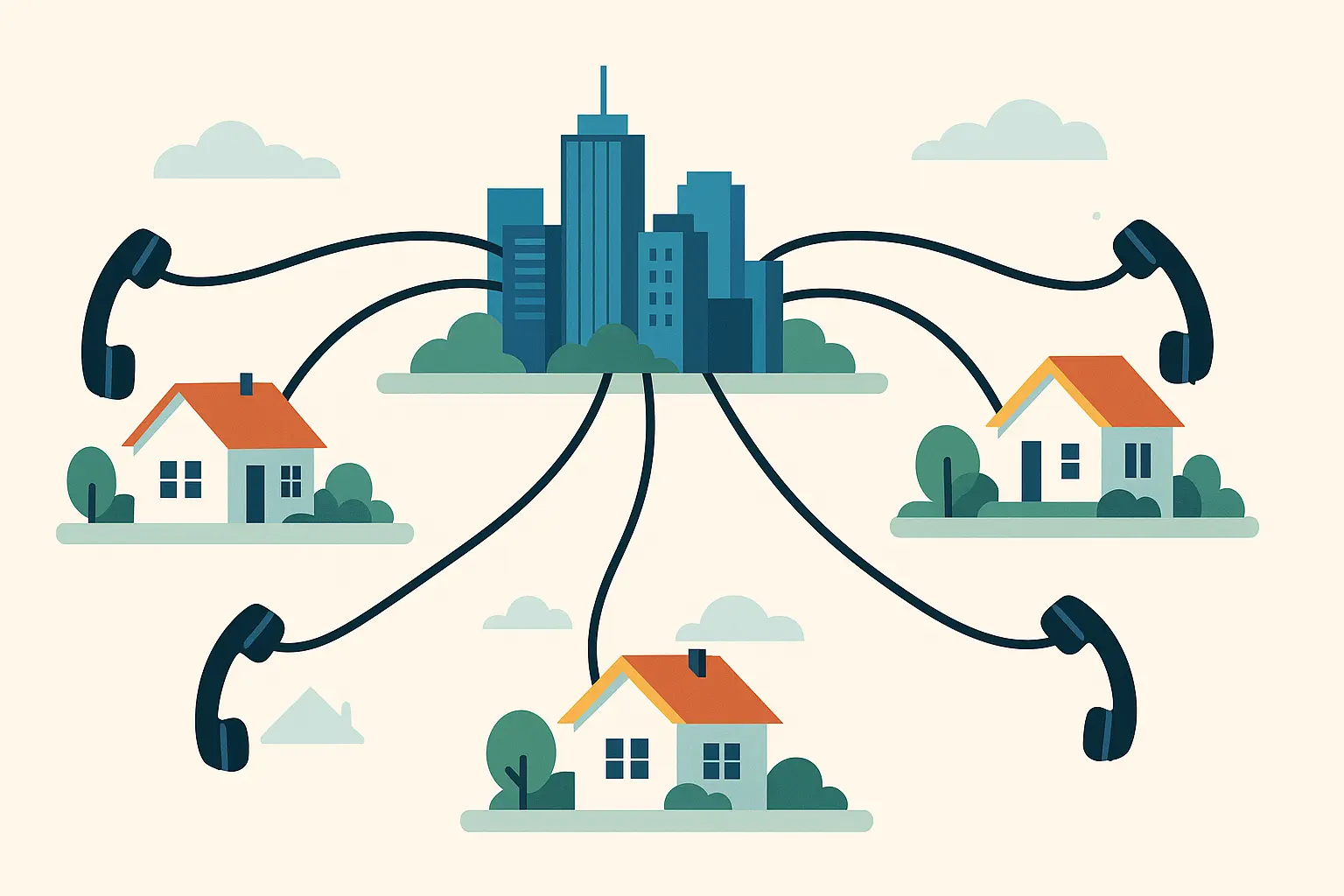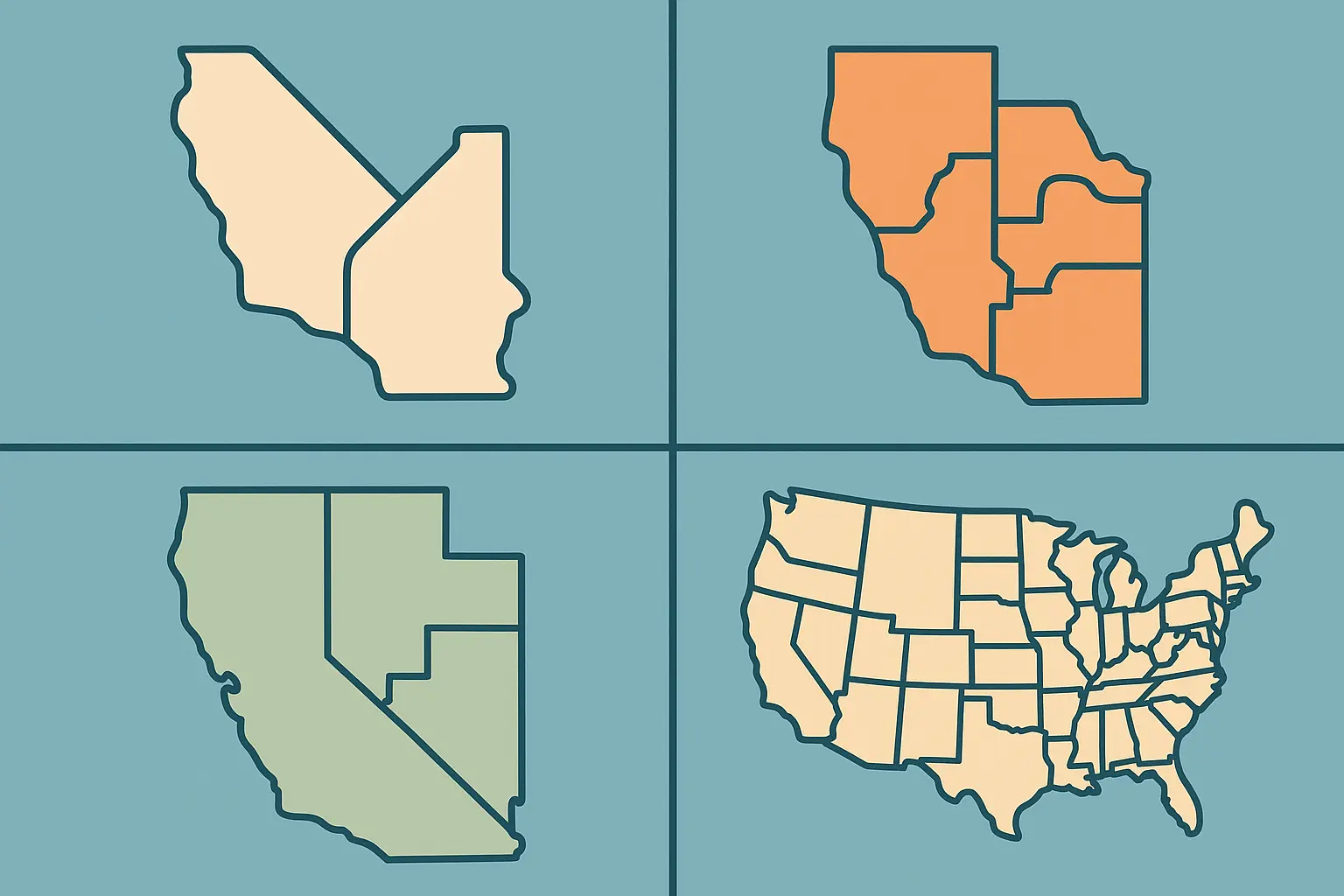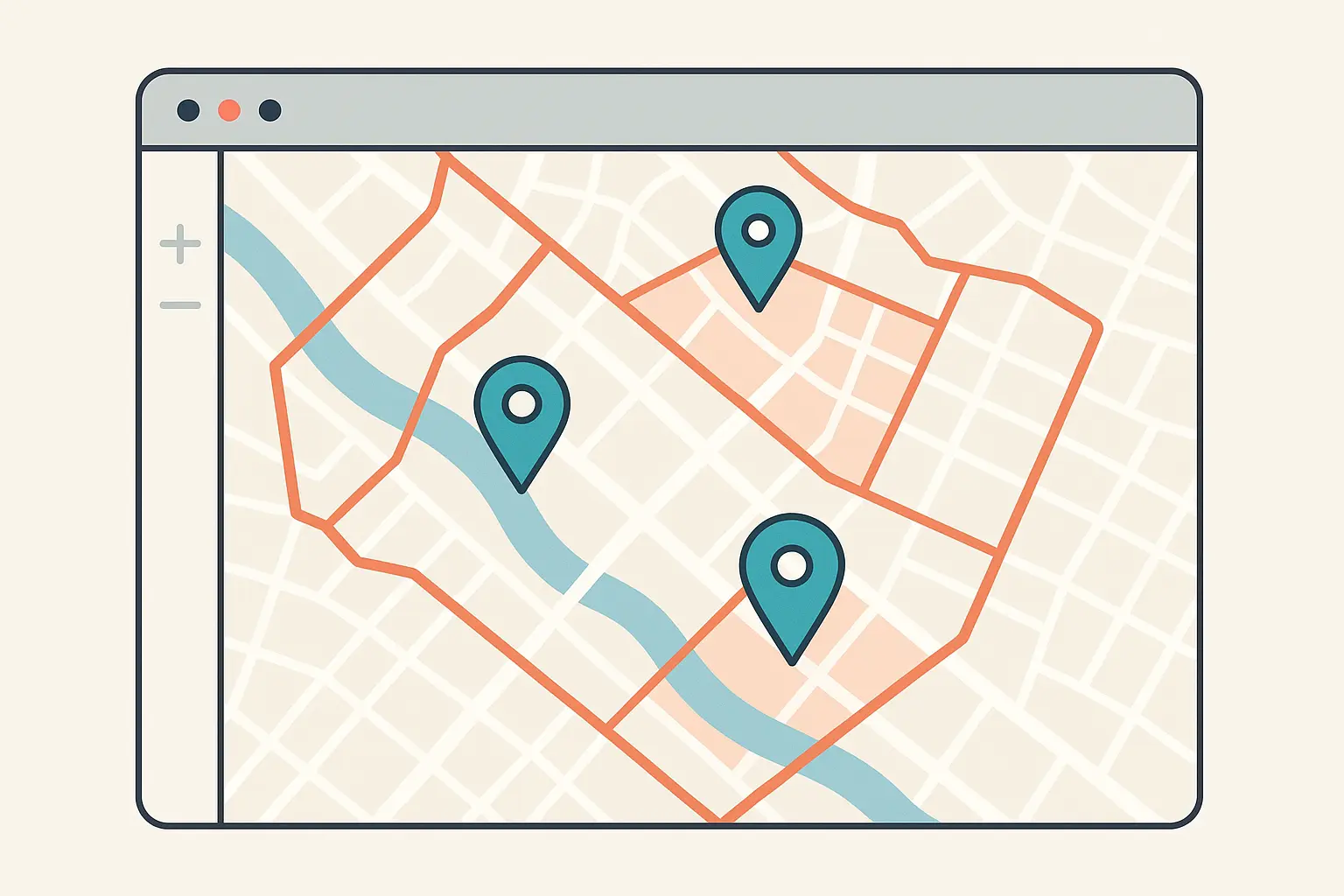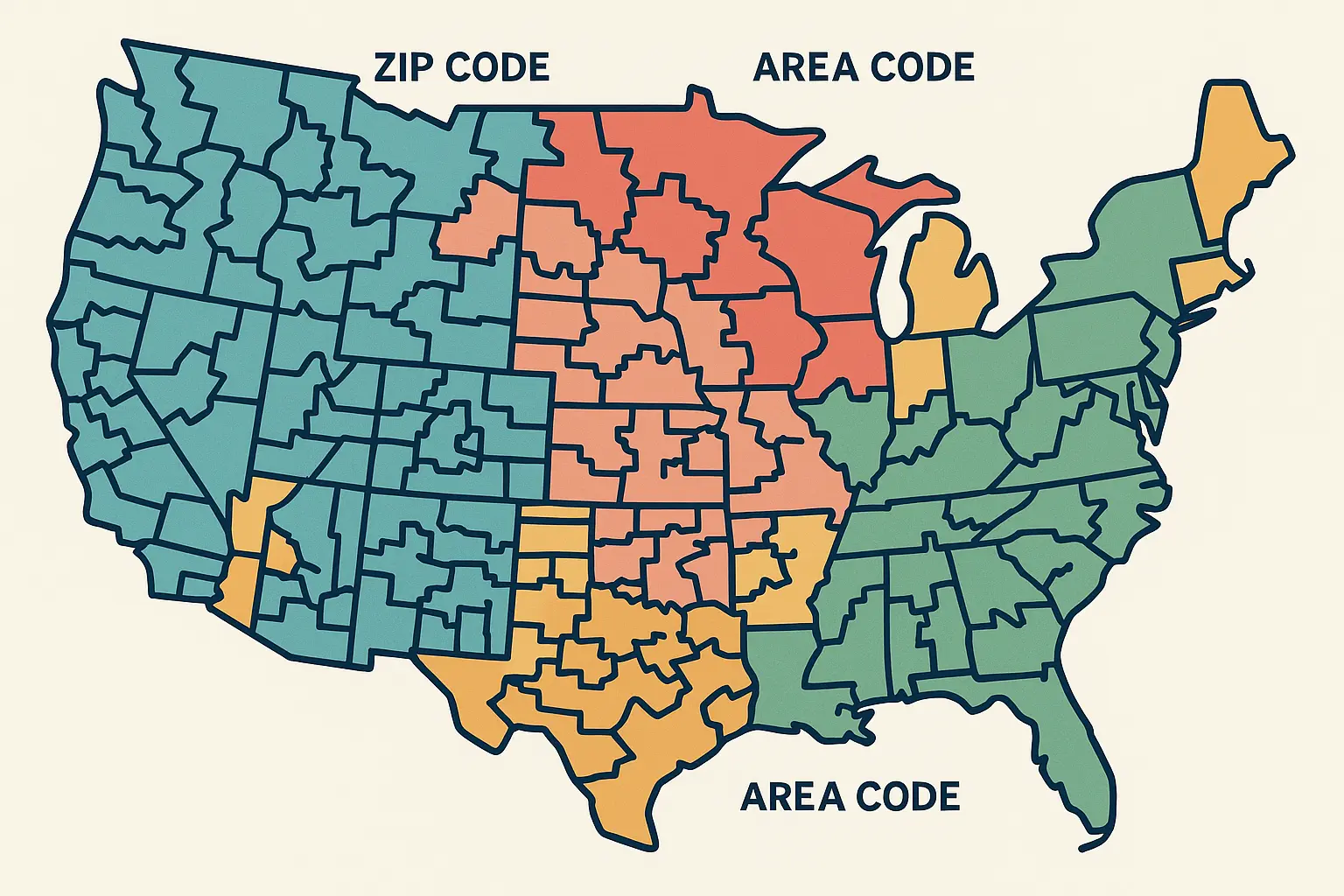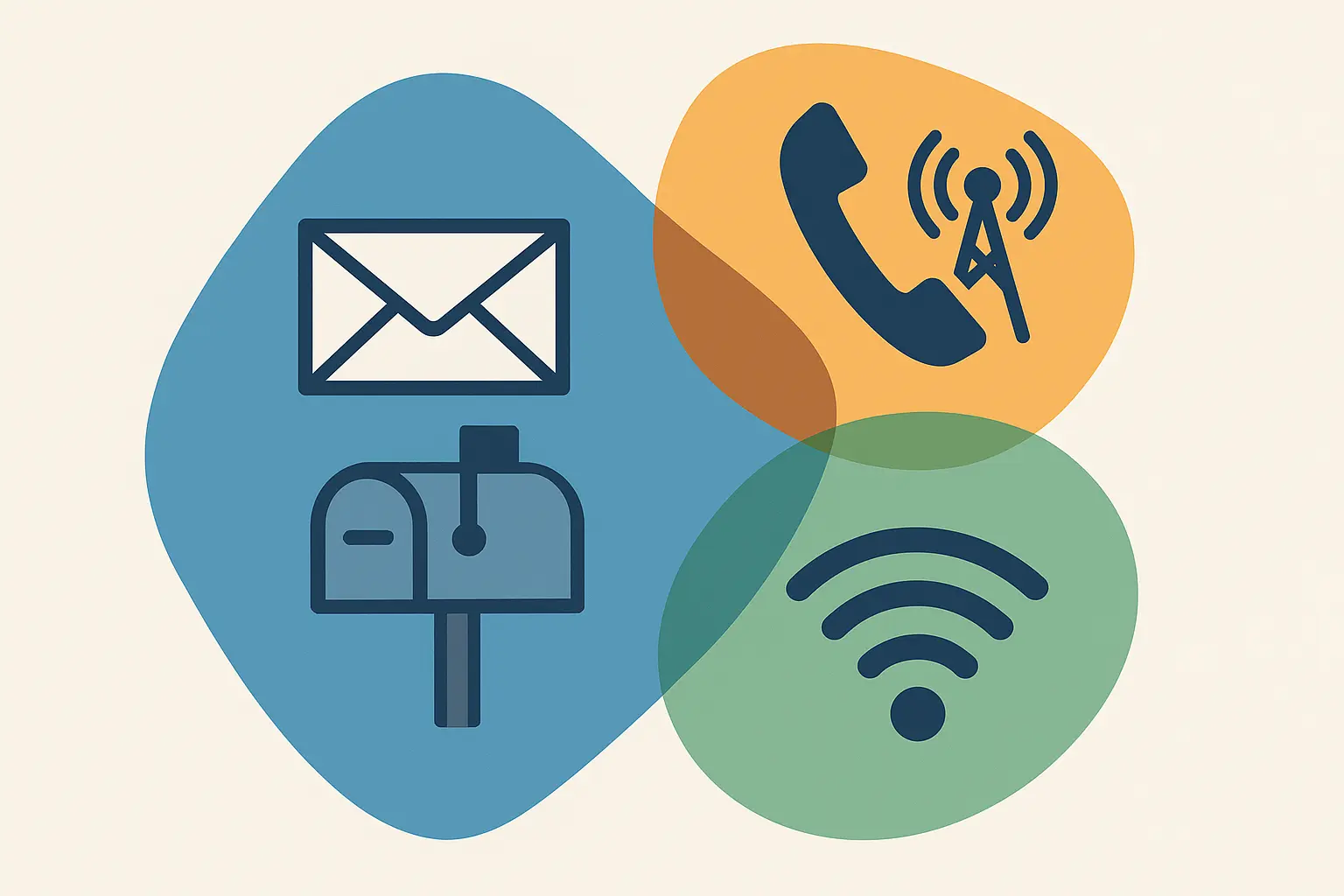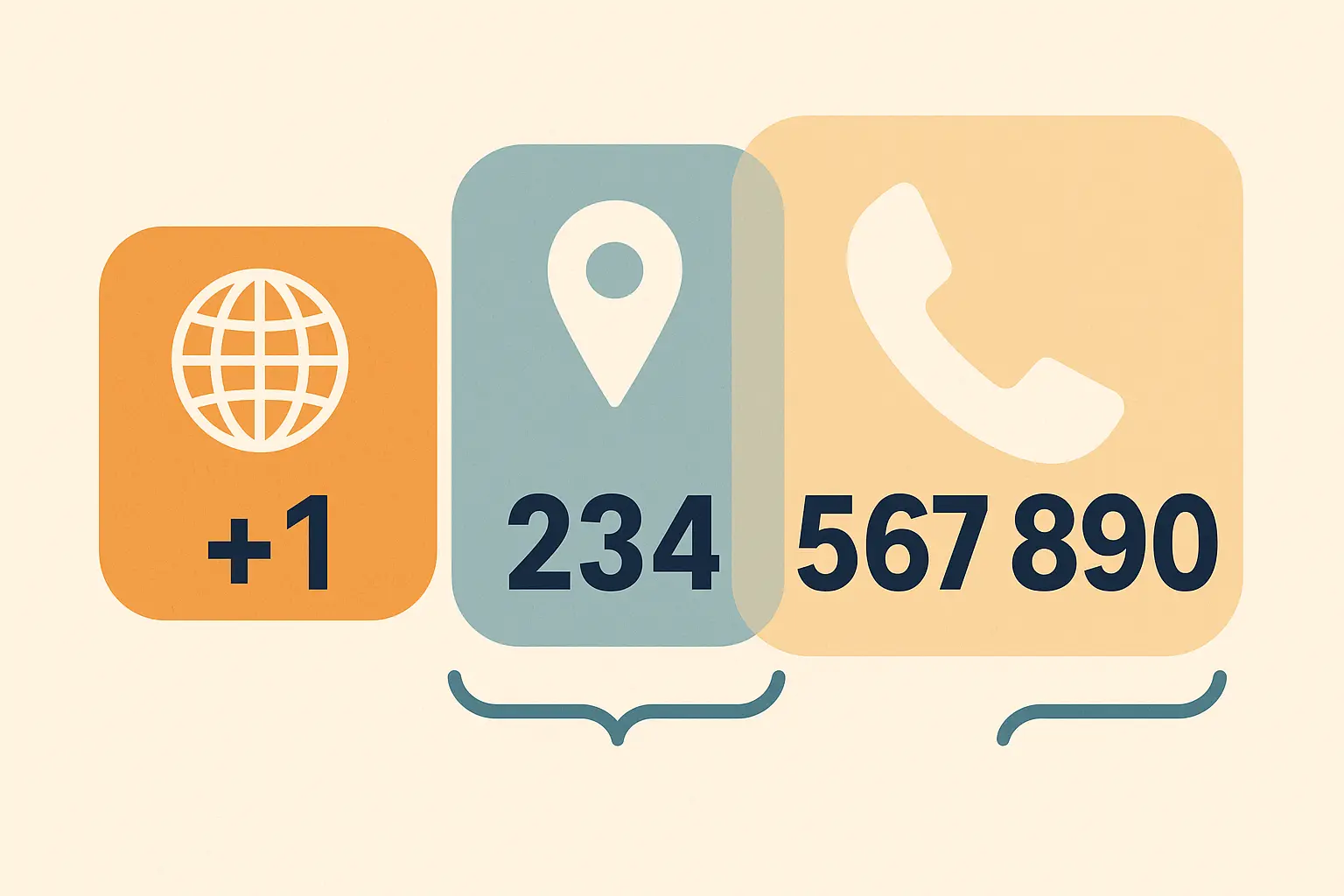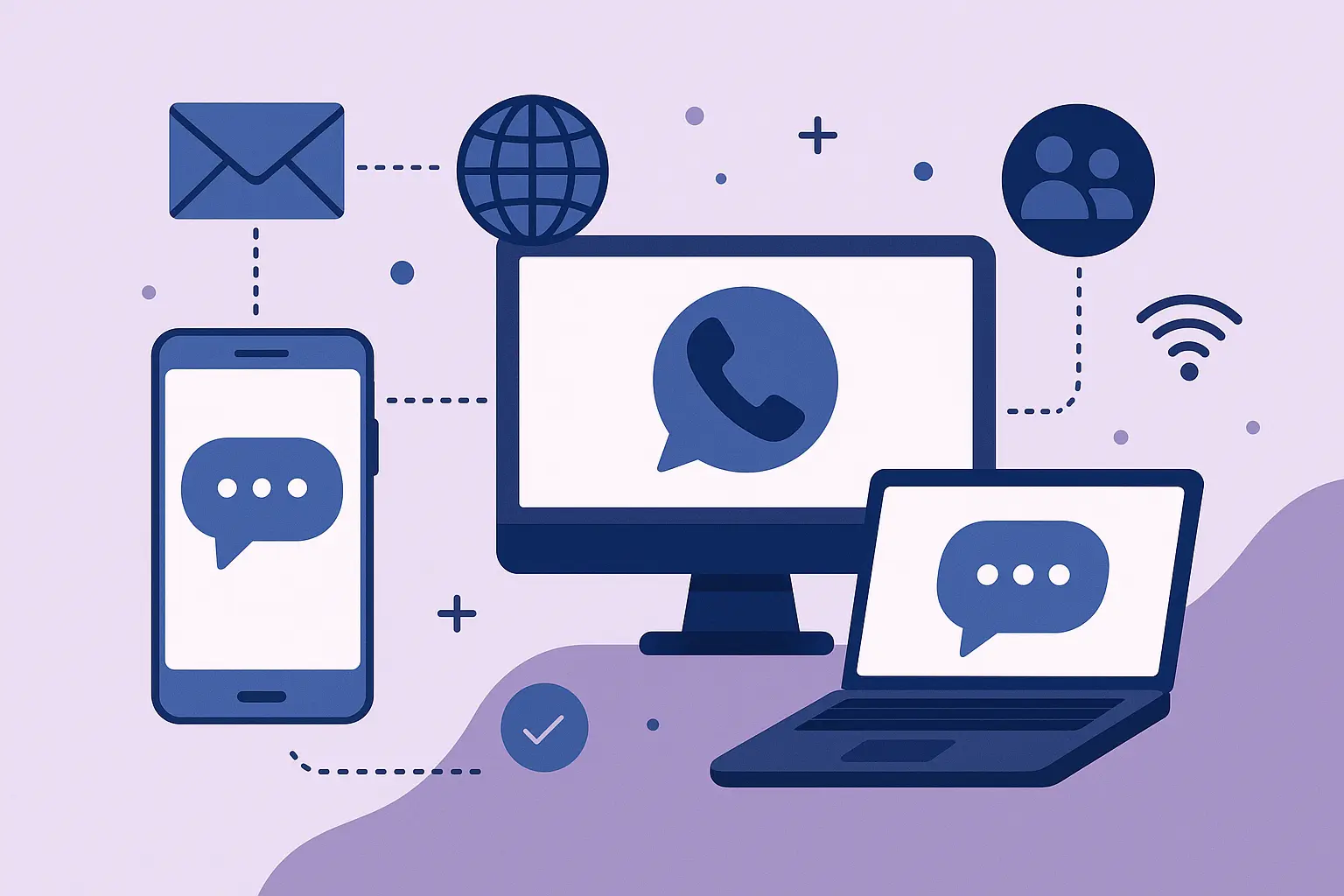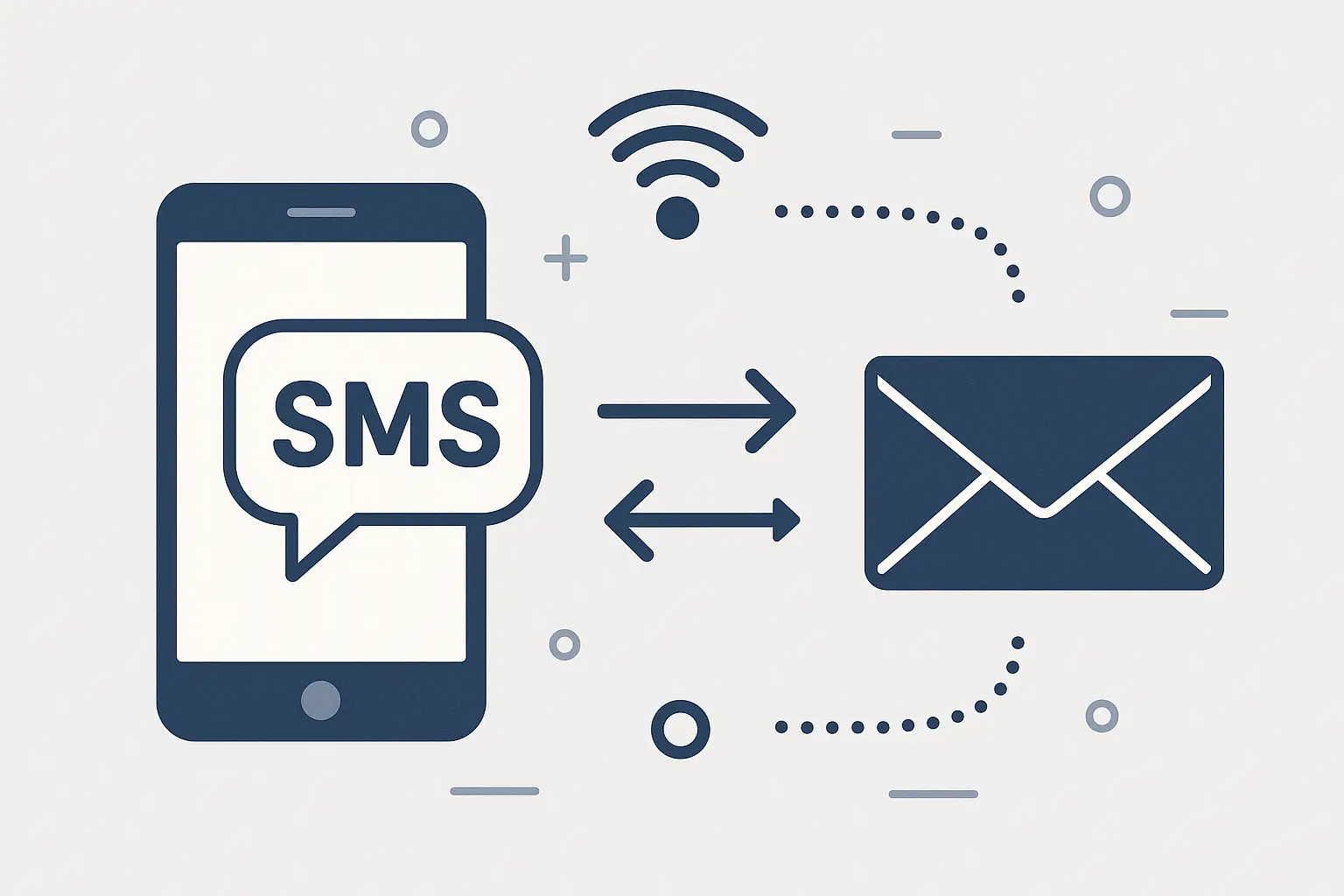If you live in Minneapolis, chances are you’ve got a 612 number – or you’re wondering why you don’t. Here’s the real story behind who gets to keep this coveted area code and why it matters more than you might think.
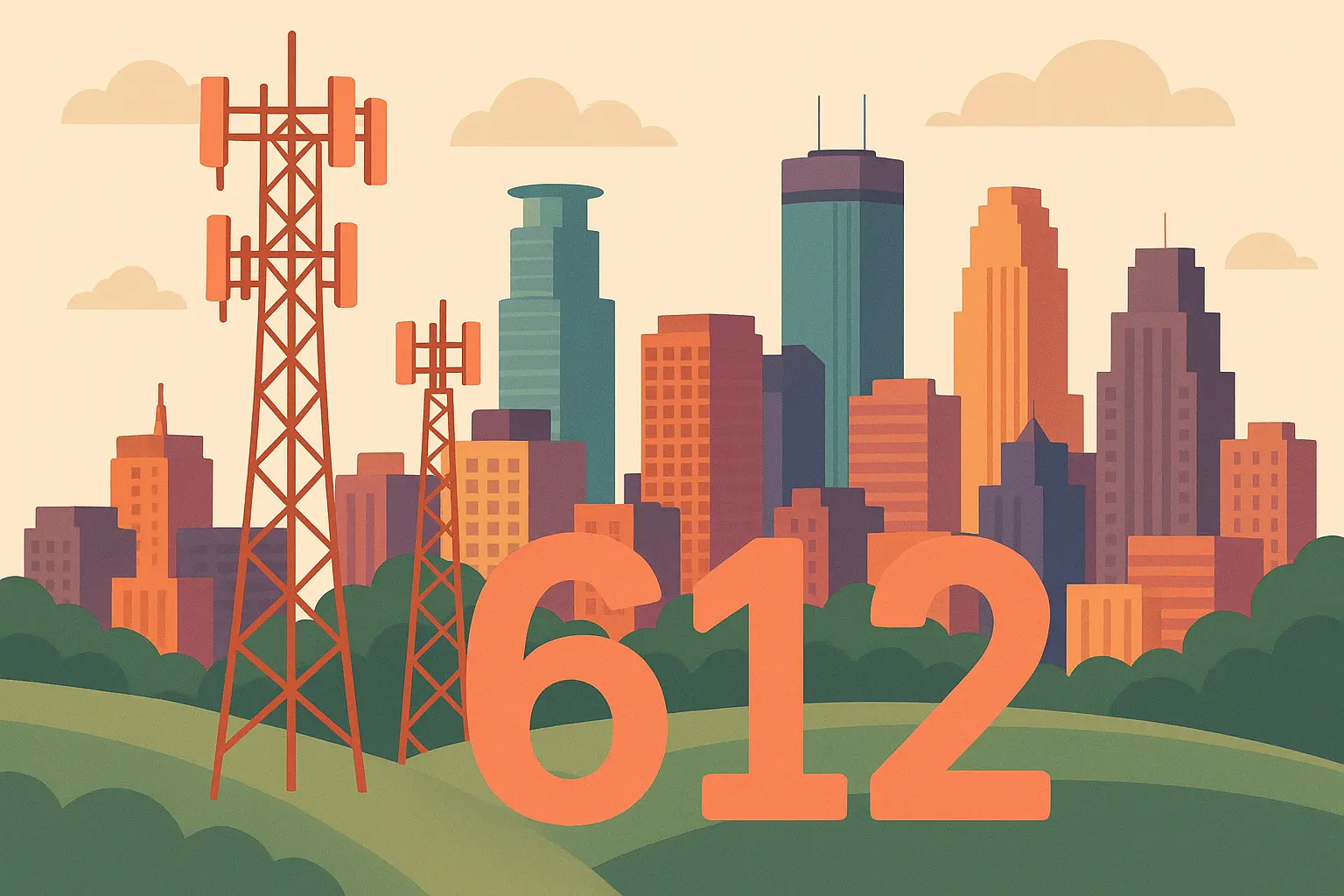
Table of Contents
Table of Contents
-
Where Your 612 Number Actually Works (And Where It Doesn’t)
-
How Minneapolis Lost Half Its Territory
-
Why Some Neighborhoods Kept 612 While Others Got the Boot
-
Finding Your Exact 612 Coverage Using ZIP Codes
-
The Real Story Behind 612 Phone Number Formatting
-
Making 612 Work Better for You
TL;DR
-
612 only covers Minneapolis proper and select inner-ring suburbs now – not the whole metro like it used to
-
Minneapolis lost huge chunks of its original 612 territory to new area codes 651 and 763 because of population growth
-
Downtown, the University of Minnesota, and historic neighborhoods like Northeast and Uptown kept their 612 numbers
-
Your ZIP code (especially 55401-55488 range) is the best way to figure out if you’re in 612 territory
-
You might need to dial all 10 digits even for local calls these days
-
Having a 612 number still carries some Minneapolis street cred
Where Your 612 Number Actually Works (And Where It Doesn’t)
Let me break this down for you: 612 doesn’t cover nearly as much as people think. If you’re new to Minneapolis, you might assume the whole metro area uses 612. Nope. It’s basically just Minneapolis proper and a few lucky inner suburbs.
Minneapolis Keeps Its Crown Jewel Status
Minneapolis remains the heart of 612 territory, serving 863,895 residents across the core metropolitan area. The median household income in the 612 area is $95,620, reflecting the economic strength of Minneapolis’s core metropolitan area. This explains why businesses prioritize maintaining their established 612 phone numbers for credibility and local recognition.
Here’s the deal with who kept their 612 numbers: Downtown Minneapolis was a no-brainer – all those big corporations like Target weren’t about to give up their established phone numbers. Target Corporation’s headquarters maintains its iconic 612 phone numbers as part of its Minneapolis area code identity. Their main switchboard (612) 304-6073 serves as a recognizable local connection for customers and business partners who associate the 612 area code with established Twin Cities commerce.
Your Favorite Minneapolis Neighborhoods Made the Cut
The neighborhoods that kept 612 are basically Minneapolis’s greatest hits: Northeast (the artsy area), Uptown (where all the bars are), and South Minneapolis (the residential heart). These places are so tied to Minneapolis’s identity that losing 612 would’ve felt wrong.
|
Minneapolis Neighborhood |
612 Status |
Primary ZIP Codes |
Notable Features |
|---|---|---|---|
|
Downtown Minneapolis |
Retained 612 |
55401-55405 |
Business district, Target Center |
|
Northeast Minneapolis |
Retained 612 |
55413-55418 |
Historic arts district |
|
Uptown |
Retained 612 |
55408, 55419 |
Entertainment hub, Chain of Lakes |
|
South Minneapolis |
Retained 612 |
55406-55419 |
Residential neighborhoods |
|
University Area |
Retained 612 |
55414, 55455 |
University of Minnesota campus |
University of Minnesota’s 612 Legacy
The University of Minnesota situation is particularly interesting. Even their St. Paul campus kept 612 numbers because they’re technically part of the Minneapolis phone system. Pretty smart move on their part. As noted in coverage of area code changes, “The changes will not directly affect the University, which is served by the Minneapolis phone system. This will allow University phone lines on the St. Paul campus to remain in the 612 area code even though St. Paul and its suburbs will become part of the 651 area.”
The Suburbs That Survived the Great Area Code Purge
But here’s where it gets weird: Some places you’d swear are Minneapolis don’t have 612 anymore. A bunch of suburbs that feel like part of the city got shuffled off to 651 or 763 when things got crowded. Only certain first-ring suburbs developed so closely with Minneapolis that they retained 612 numbers, particularly those with strong historical connections to the central city.
How Minneapolis Lost Half Its Territory
This is where the story gets dramatic. Back in the day, 612 covered a huge chunk of Minnesota – we’re talking way beyond just Minneapolis. But then the ’90s happened, and everything changed.
When 612 Ruled Much More Than Just Minneapolis
Originally, the 612 area covered far more territory than it does today, including many suburbs and surrounding counties that now have completely different area codes. With 70.5% of people in the labor force in the 612 area today, the economic activity and business growth that drove the need for additional phone numbers becomes clear.
The population explosion created a phone number crisis. Everyone needed multiple numbers – home phone, work phone, fax machine, early cell phones. Plus, businesses were expanding like crazy. Minneapolis was becoming a major corporate hub, and suddenly there weren’t enough 612 numbers to go around.
The Great Area Code Divorce of the 1990s and 2000s
So what did they do? They started chopping up the territory. Multiple splits and overlays systematically reduced 612’s territory as telecommunications officials tried to accommodate growing demand.
The pattern of area code splits continues across Minnesota today. “Minnesota is getting a new area code for the first time in more than 20 years. The Minnesota Public Utilities Commission says the 507 area code covers roughly the southern third of the state and will run out of numbers in two years.” This shows that the pressure for new numbers isn’t going away anytime soon.
Here’s how it went down:
-
1998: Eastern suburbs got kicked out to make room for 651
-
2000: Northwestern suburbs became 763
-
2000: Southwestern areas became 952
It wasn’t personal – it was just math. There are only so many possible phone numbers in any area code, and Minneapolis had outgrown its original boundaries.
|
Area Code |
Year Implemented |
Territory Covered |
Reason for Split |
|---|---|---|---|
|
612 |
1947 (Original) |
Minneapolis + Large Regional Area |
Original Minnesota area code |
|
651 |
1998 |
St. Paul + Eastern Suburbs |
Population growth, number exhaustion |
|
763 |
2000 |
Northwestern Suburbs |
Continued growth, business expansion |
|
952 |
2000 |
Southwestern Suburbs |
Metropolitan area development |
Why Some Neighborhoods Kept 612 While Others Got the Boot
This wasn’t random – there was actually a method to the madness. The areas that kept 612 were basically Minneapolis’s core identity neighborhoods.
Historic districts got priority. Places like Northeast Minneapolis (the old industrial area turned arts district) and the Mill District weren’t just neighborhoods – they were part of Minneapolis’s story. Giving them different area codes would’ve felt like erasing history.
Historic Districts Earned Their 612 Stripes
Neighborhoods with deep historical roots in Minneapolis often maintained their original 612 number designation as a way of preserving community identity and connection to the city’s heritage. These areas represent the authentic Minneapolis experience that residents and businesses wanted to protect.
Historic District 612 Preservation:
-
Northeast Minneapolis Arts District – Maintained cultural identity
-
Mill District – Preserved industrial heritage connection
-
Marcy-Holmes – University area historical significance
-
Whittier – Established residential community character
-
Phillips – Long-standing neighborhood identity
Economic powerhouses stayed put. Downtown obviously kept 612 because that’s where all the major businesses are. You think Target Corporation was going to change their main number? Not happening.
University areas were protected. The U of M campus and surrounding neighborhoods like Marcy-Holmes kept their numbers because, let’s face it, the university is a huge part of what makes Minneapolis Minneapolis.
But proximity to Minneapolis didn’t guarantee anything. Some suburbs that are basically part of the city got reassigned anyway. It came down to infrastructure and capacity more than geography.
Using Maps to Navigate 612 Territory
Digital mapping resources and interactive tools provide precise geographic boundaries for 612 area code coverage, helping you figure out exactly which streets and neighborhoods fall within the territory.
612 Neighborhood Status Reference:
-
Downtown Minneapolis – Core 612 territory
-
Northeast Minneapolis – Retained 612 (Arts District)
-
Uptown/Calhoun – Kept 612 designation
-
University of Minnesota area – Maintained 612
-
Many eastern suburbs – Moved to 651
-
Northwestern suburbs – Transferred to 763
Finding Your Exact 612 Coverage Using ZIP Codes
Want to know for sure if you’re in 612 territory? Check your ZIP code. It’s way more reliable than trying to figure out neighborhood boundaries.
Minneapolis ZIP Codes That Guarantee 612 Service
The magic ZIP codes are mostly in the 55400s range. If your ZIP starts with 554, you’re probably in 612 land. Specific ZIP codes in the 55401-55488 range correlate directly with 612 area code territory, covering downtown Minneapolis, residential neighborhoods, and commercial districts.
The median family income in the 612 area code zip code regions is $126,351, demonstrating the economic prosperity of these specific areas. This explains why maintaining 612 phone numbers remains important for businesses serving this affluent customer base.
Downtown’s Premium ZIP Code Collection
ZIP codes like 55401, 55402, and 55403 represent the heart of Minneapolis’s business district and maintain exclusive 612 area code service. The IDS Center at 80 South 8th Street (ZIP code 55402) houses numerous businesses that maintain prestigious 612 phone numbers. Companies like U.S. Bank use numbers like (612) 303-0000 to maintain their connection to Minneapolis’s financial district identity.
But here’s a pro tip: Don’t assume your ZIP code tells the whole story. Sometimes area code boundaries cut right through postal zones, so you might need to double-check with your phone company.
The easiest way? Just look at your current phone number. If it starts with 612, you’re golden. If not, now you know why.
The Real Story Behind 612 Phone Number Formatting
Understanding how 612 phone numbers work isn’t just about memorizing the format – there’s actually a system behind those digits that affects how you dial and receive calls.
For businesses managing multiple phone numbers across the 612 area, understanding proper phone number formatting becomes crucial for maintaining professional communication standards.
Cracking the Code on Number Structure
Every 612 phone number follows the format of (612) XXX-XXXX, where those three digits after 612 aren’t random – they’re exchange codes that serve specific purposes. This structure helps organize Minneapolis’s phone infrastructure in ways that most people never think about.
When You Actually Need All 10 Digits
Always use 10 digits now. Even for local calls, you might need to dial the full (612) XXX-XXXX format. Phone systems are pickier these days. Local dialing within 612 territory sometimes requires the full 10-digit format depending on overlay area codes and your phone service provider’s requirements.
10-Digit Dialing Checklist:
-
Always dial (612) + 7 digits for calls to other area codes
-
Check if your carrier requires 10 digits for local 612-to-612 calls
-
Program important numbers with full 10-digit format in your contacts
-
Verify dialing requirements when setting up business phone systems
-
Update any automated systems or security codes that use phone numbers
How Exchange Codes Divide Up Minneapolis
Those three-digit exchange codes after 612 aren’t assigned randomly – they correspond to specific geographic areas and service types within Minneapolis. Many Minneapolis businesses use exchange codes like 612-333-XXXX or 612-673-XXXX for their main lines, while residential customers in the same neighborhoods might receive numbers with exchanges like 612-822-XXXX or 612-729-XXXX.
Ever notice that your neighbors tend to have similar exchange codes? That’s the geographic clustering system at work – exchange codes frequently correlate with specific Minneapolis neighborhoods or districts.
Making 612 Work Better for You
Whether you’ve got a 612 number or you’re dealing with the reality of a different area code, here are some practical things to know.
Program your contacts with full numbers. Don’t rely on 7-digit shortcuts – they might not work depending on your carrier.
If you’re running a business, having a 612 number still carries some prestige. People associate it with being “really” Minneapolis, not just metro area.
Auto Forward SMS offers valuable solutions for 612 area code users who need better communication management. Minneapolis businesses can forward critical text messages to email systems for improved record-keeping and team coordination. Organizations with multiple locations across 612 territory can centralize SMS communications from different numbers to streamlined email addresses or API endpoints.
For businesses managing communications across the 612 area, implementing text message forwarding to email systems helps ensure critical messages reach the right team members regardless of their physical location within Minneapolis’s diverse neighborhoods.
Organizations with complex communication needs can also explore forwarding messages to Slack channels to keep teams coordinated across multiple 612 locations, or utilize API endpoint forwarding for custom business applications.
Business Communication Optimization Checklist:
-
Set up SMS forwarding for critical business messages
-
Configure email integration for better record-keeping
-
Establish filtering rules for Minneapolis-area contacts
-
Test 10-digit dialing requirements across your phone system
-
Update contact databases with full area code formatting
-
Verify local vs. long-distance calling patterns
New users can quickly implement these solutions by following the getting started guide to configure their 612 area communications management, while Android users can reference the comprehensive Android forwarding setup instructions for optimal performance.
For everyone else, don’t stress about it. Your 651, 763, or 952 number works just fine. Most people don’t even pay attention to area codes anymore anyway.
Final Thoughts
The bottom line?

